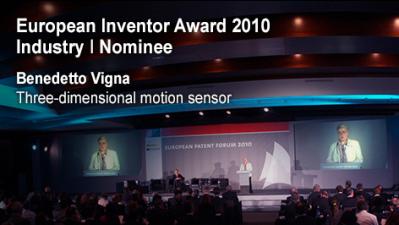Albert Markendorf, Raimund Loser
Three-dimensional scanning and measuring system
Precision is crucial to geographic surveying and digital measurement ("metrology") for industrial quality control. Every millimetre counts when rail companies scan railway tracks, or when automotive and aircraft manufacturers carry out control scans of their products.
It is no surprise that metrology is big business. Turnover on the European micro-metrology market was $117.2m in 2008 and is estimated to reach $199.7m in 2013. The market for Geospatial Information Systems, including geospatial scanners, is currently valued at $1.7bn.
Until recently, digital scanners could only measure with limited accuracy, but a new world of detail opened up when Swiss engineer Albert Markendorf and his German colleague Raimund Loser introduced a new generation of three-dimensional scanners, precise to the millimetre.
When they started developing the system in the mid-1990s, they took their inspiration from a classic measuring instrument called the "theodolite" (from Greek: "a clear view of the surroundings"), a 16th‑century hand-held device which measures both horizontal and vertical angles in the environment.
Markendorf and Loser wanted a portable hand-held device which could measure angles, as well as distances. They found that none of the laser-based technologies then available on the market could meet these requirements.
Taking their cue from the theodolite and its ability to measure angles, they developed a hand-held laser scanner with a twist: it also measures the angles at which the laser is reflected by an object.
The initial test results proved groundbreaking: the new scanners can scan objects - even moving ones - from a distance of up to 100 m, with an astonishing accuracy of less than 6 mm.
When the scanners were introduced to the market as the T-Probe and T-Scan system in 2004, they met with an overwhelming response: Leica Geosystems sold more than 1 500 units within the first year.
The automotive industry, including leading companies such as Audi, Daimler and Toyota, now makes up half of the system's customer base. The system can measure up to nine cars in one session, ten times more than previous solutions. Major aerospace companies like Boeing and Airbus also use the hand-held devices.
The market leader in 3D scanning systems, Leica Geosystems had 3 500 employees and achieved a turnover of €595.4m in 2008. The scanners developed by Markendorf and Loser are fundamental to its entire suite of 3D scanning systems.
Contact
European Inventor Award and Young Inventors Prize queries:
european-inventor@epo.org Subscribe to the European Inventor Award newsletterMedia-related queries:
Contact our Press team#InventorAward #YoungInventors


